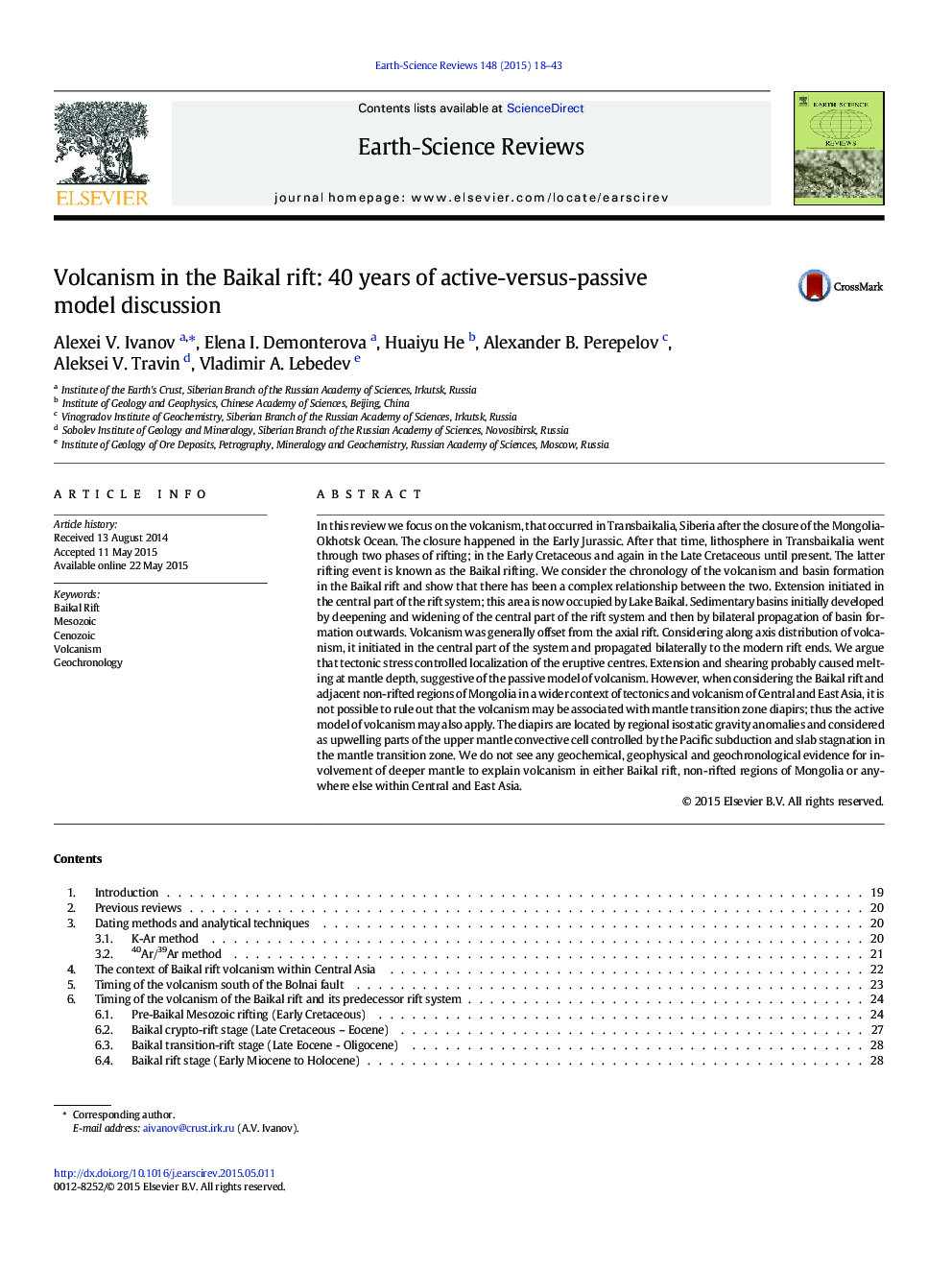| Article ID | Journal | Published Year | Pages | File Type |
|---|---|---|---|---|
| 4725642 | Earth-Science Reviews | 2015 | 26 Pages |
In this review we focus on the volcanism, that occurred in Transbaikalia, Siberia after the closure of the Mongolia-Okhotsk Ocean. The closure happened in the Early Jurassic. After that time, lithosphere in Transbaikalia went through two phases of rifting; in the Early Cretaceous and again in the Late Cretaceous until present. The latter rifting event is known as the Baikal rifting. We consider the chronology of the volcanism and basin formation in the Baikal rift and show that there has been a complex relationship between the two. Extension initiated in the central part of the rift system; this area is now occupied by Lake Baikal. Sedimentary basins initially developed by deepening and widening of the central part of the rift system and then by bilateral propagation of basin formation outwards. Volcanism was generally offset from the axial rift. Considering along axis distribution of volcanism, it initiated in the central part of the system and propagated bilaterally to the modern rift ends. We argue that tectonic stress controlled localization of the eruptive centres. Extension and shearing probably caused melting at mantle depth, suggestive of the passive model of volcanism. However, when considering the Baikal rift and adjacent non-rifted regions of Mongolia in a wider context of tectonics and volcanism of Central and East Asia, it is not possible to rule out that the volcanism may be associated with mantle transition zone diapirs; thus the active model of volcanism may also apply. The diapirs are located by regional isostatic gravity anomalies and considered as upwelling parts of the upper mantle convective cell controlled by the Pacific subduction and slab stagnation in the mantle transition zone. We do not see any geochemical, geophysical and geochronological evidence for involvement of deeper mantle to explain volcanism in either Baikal rift, non-rifted regions of Mongolia or anywhere else within Central and East Asia.
